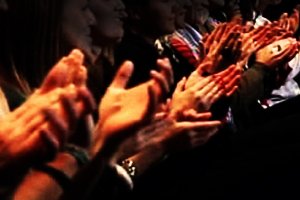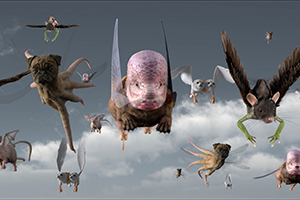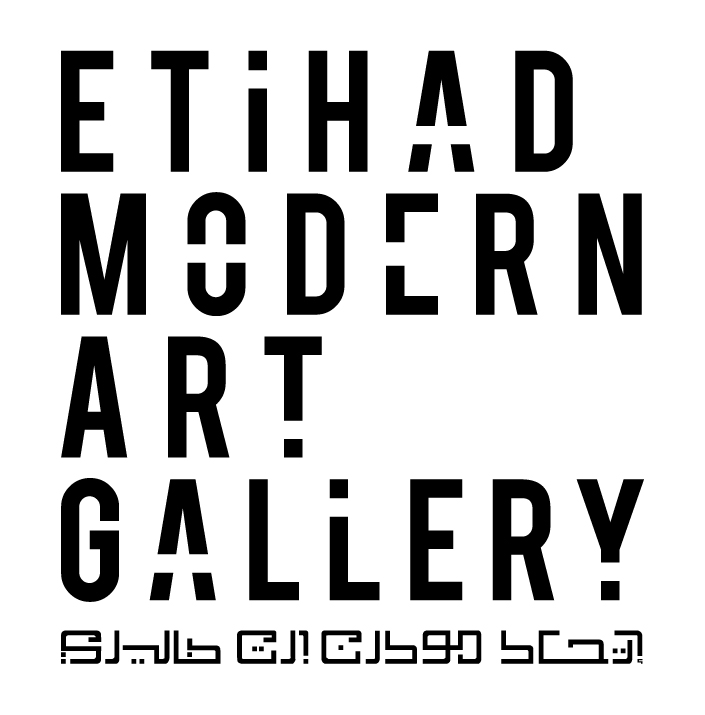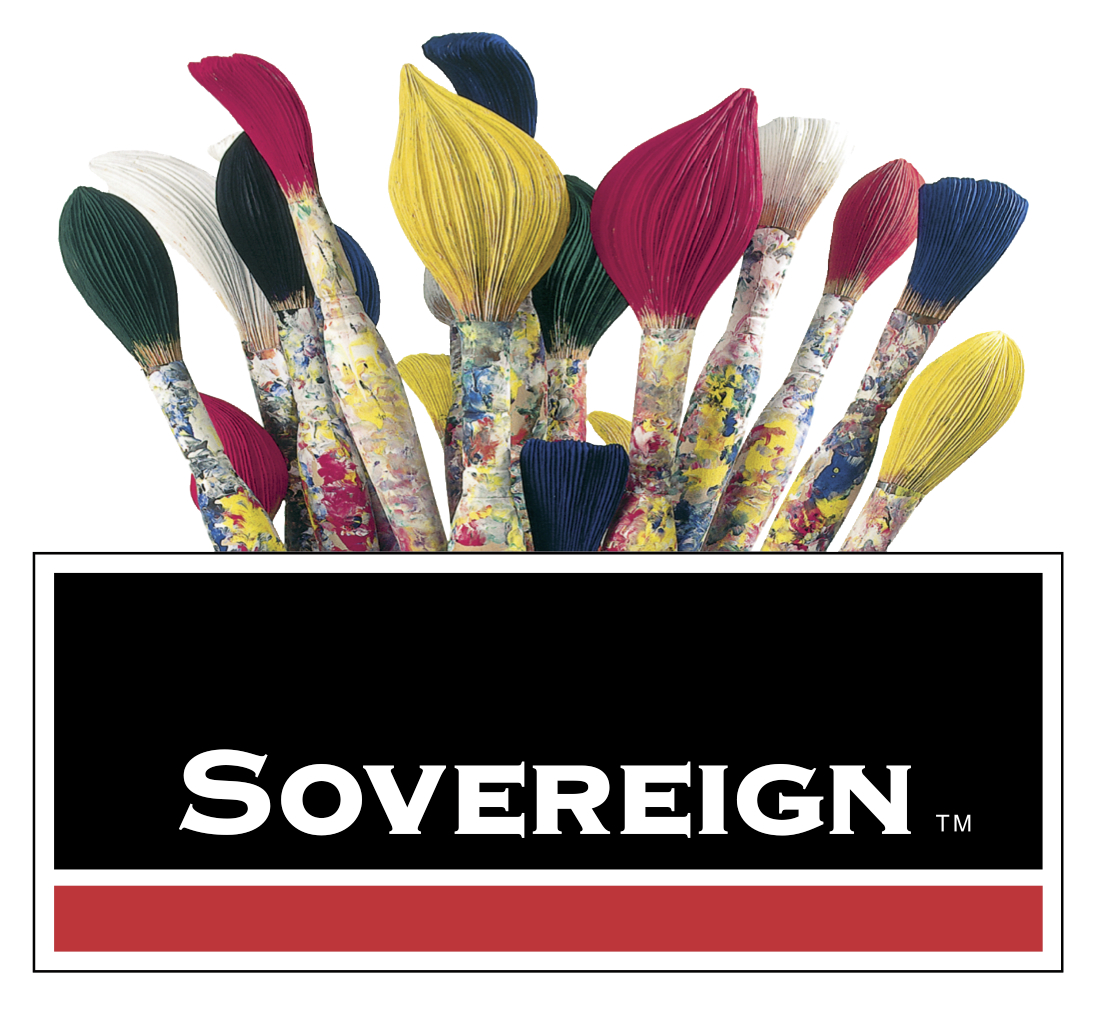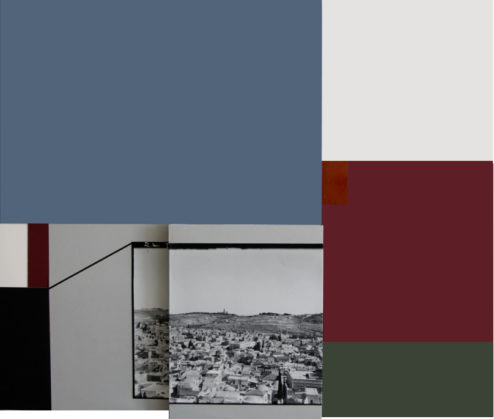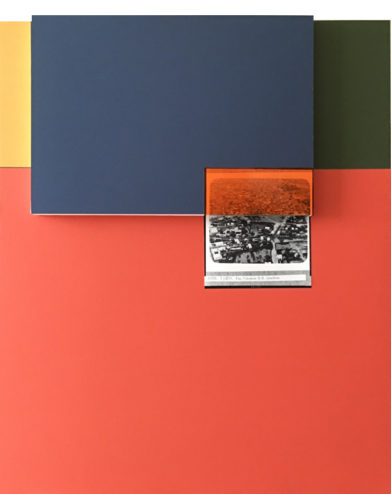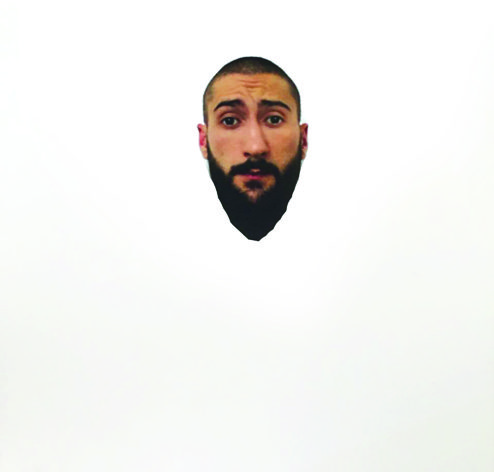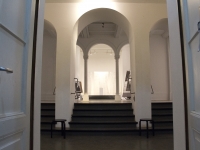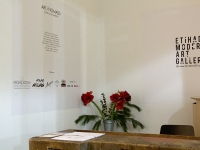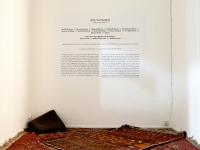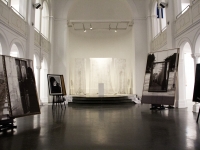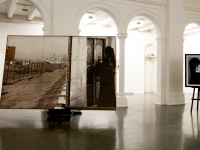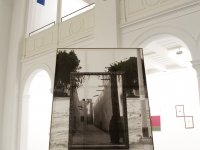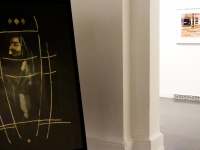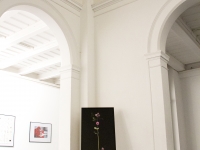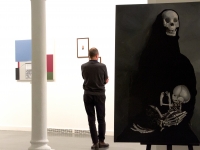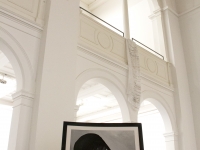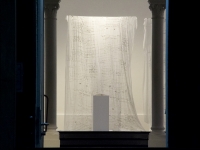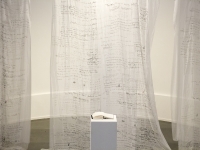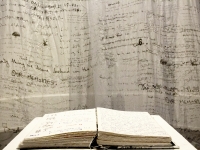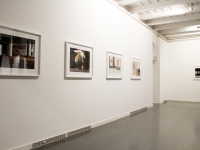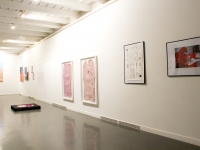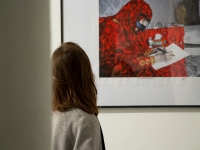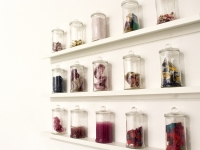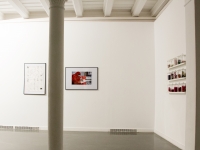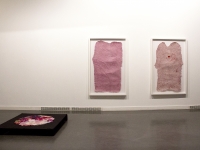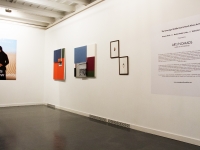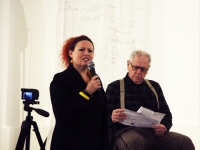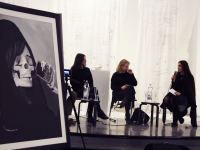ART NOMADS:
Made in The Emirates
9 – 22 December 2016
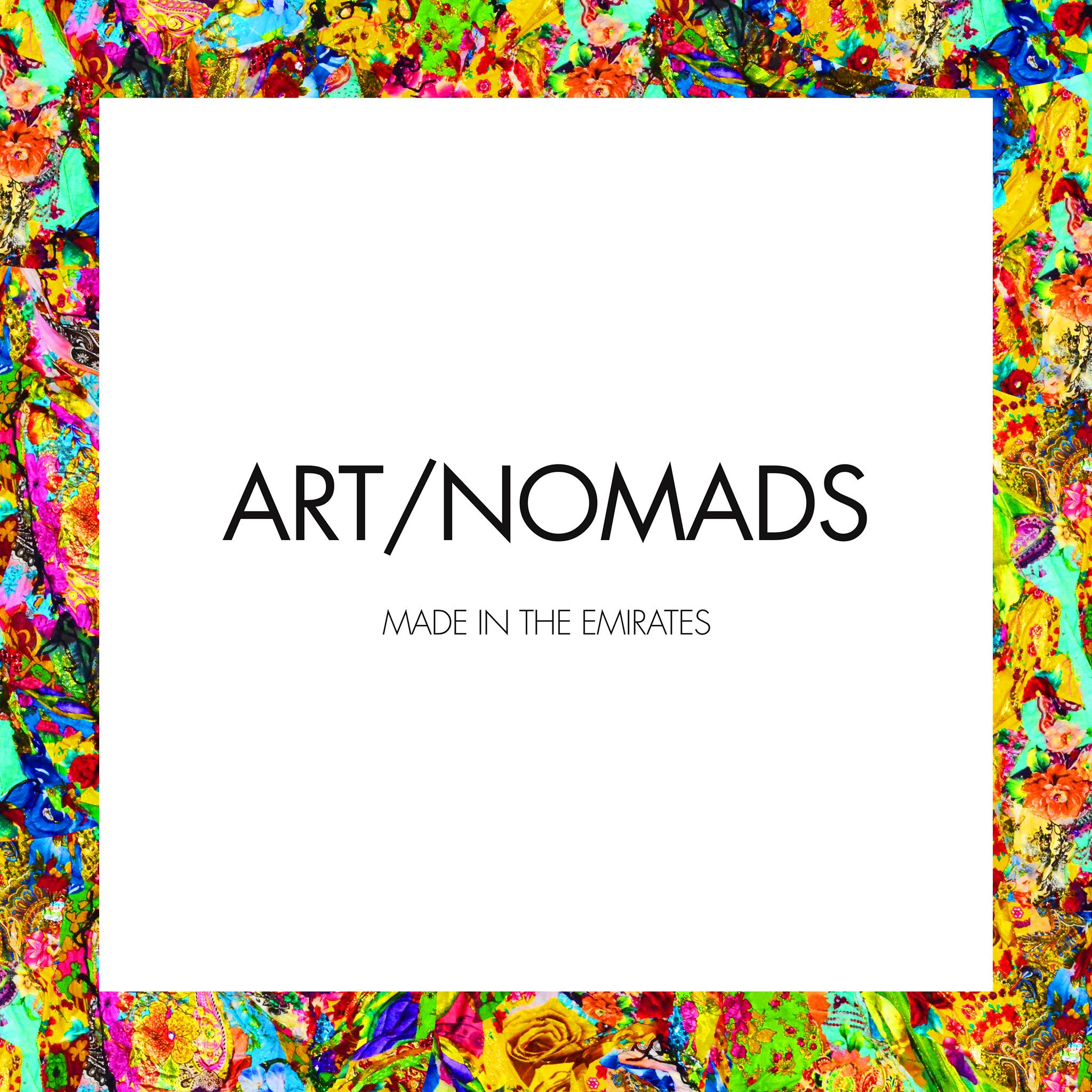
Khalid Al Banna // Ahmed Al Faresi // Reem Al Ghaith // Khalid Al Qasabi // Abdulqader Al Rais // Maisoon Al Saleh // Jamal Al Suwaidi // Maitha Demithan // Lamya Gargash // Dr. Najat Makki // Salama Nasib // Taqwa //
& The Sovereign MENA Art Prize Finalists:
Hazem Harb, Nadia Kaabi-Linke, Walid Al Wawi
Curated by David Szauder, Zsuzsanna Petró & Rachel Rits-Volloch
In Partnership with the Etihad Modern Art Gallery
and Sovereign Art Foundation MENA Art Prize
Opening: 9 December @ 7 – 10pm
At Studio 1 & MOMENTUM
Kunstquartier Bethanien, Berlin
Symposium
10 December 2016 @ 3 – 4.30pm
How Culture Builds Cities: Berlin and Abu Dhabi
SPEAKERS:
Janet Bellotto, Zayed University, Associate Professor and Associate Dean of the College of Arts and Creative Enterprises
David Elliott, Art Historian, Curator, Writer, Museum Director, Judge of Sovereign Art Prize
Jeni Fulton, Editor-in-Chief of Sleek Magazine
Vanina Saracino, Curator
More info on the symposium here >
In the frame of the exhibition Art Nomads – Made in Berlin,
MOMENTUM in collaboration with the Sovereign Art Foundation presents
the finalists of the Sovereign Art Foundation MENA Art Prize from the UAE:
Hazem Harb // Nadia Kaabi-Linke // Walid Al Wawi
More info on the artists here >
To know more about the exhibition Art Nomads – Made in Berlin
visit the exhibition website here >
and the facebook page here >
Curatorial Statement
Berlin. Home to countless galleries and museums. Adoptive home to countless artists. Berlin has come to be known internationally as the art capitol of Europe, attracting artists from around the world. At the geographical center of Europe, Berlin acts as a vortex, sucking in the cool young things of art, fashion, media, music, professionals and tourists, migrant laborers and refugees. Berlin is a city of nomads where everyone is always from elsewhere, somewhere anywhere but here. It is a city of mobile people and moving images. In willful defiance of its painful history, Berlin, the perpetually evolving city, welcomes everyone. In this age of displacement, Berlin is a city constantly rebuilding itself. On a mission to outgrow its legacy of war, Berlin redefines itself through art and culture.
Abu Dhabi. An oasis in the desert reinventing itself as the art capitol of the Middle East. A culture of pearl divers whose palaces until only fifty years ago were tents, today builds skyscrapers and museums. Adoptive home to the Louvre and the Guggenheim, Abu Dhabi is a city of nomads who build monuments to permanence designed by the world’s greatest architects. Living in a culture of incredibly rapid modernization, Emeraties are balanced on the precarious edge of maintaining their heritage while actively redefining itself through influences from abroad. A city of nomads no longer, Abu Dhabi instead opens itself to the phenomenon of art nomads, aiming to attract cultural tourism, and the ever mobile cultural producers which make it happen.
Art Nomads – Made in Berlin and Made in the Emirates are two sister exhibitions bridging two capitol cities redefining themselves through art; two radically different cultures following parallel trajectories; two places which voraciously ingest influences from abroad, yet produce cultural outputs inextricably linked to the identity of each city.
From Abu Dhabi comes an exhibition of art from the United Arab Emirates. A young art, new to figuration, it is unsullied by the overbearing preconceptions of western art history, in the most exciting stages of finding its own voice. Showcasing the work of 16 artists, 60% of whom are women, it is a co-curation by Zsuzsanna Petró of the Etihad Modern Art Gallery, David Szauder, and Rachel Rits-Volloch of MOMENTUM, who is responsible for the Sovereign MENA Art Prize program and the symposium accompanying the exhibition, taking place at Berlin’s Bethanien Art Center on 9-22 December 2016, in cooperation with the Etihad Modern Art Gallery. Sovereign Art Foundation MENA Art Prize program presents work by artists based in the UAE who were selected as finalists in this year’s inaugural prize. The exhibition is accompanied by a symposium on cultural capital: Abu Dhabi builds the Louvre and the Guggenheim with the world’s top architects, while Berlin rebuilds its Stadtschloss, re-homes its museums, and brings famous museum directors from London to run its theaters. Is this a parallel trajectory? Is Abu Dhabi going for the “Berlin Effect” of cultural capital? We invite art professionals working in and with the UAE to discuss this and other questions linking the two cities.
From Berlin, the city of art nomads, comes an exhibition of art from elsewhere, about otherness, on the move to somewhere else. Showcasing the work of approximately 30 artists, it is a co-curation by 3 Berlin-based curators – David Szauder, Rachel Rits-Volloch, and Constanze Kleiner. While the origins of these artists spans the entire world, Berlin is the unifying force which links them. Whether they came to study or teach or attend one of the city’s prestigious artist residencies or simply to soak up the vibe, this group of exceptional artists form the core of Berlin’s art nomads. The exhibition opens at the Etihad Modern Art Gallery in Abu Dhabi in February 2017.
Sovereign Art Foundation MENA Art Prize finalists from the UAE
|
Nadia Kaabi-Linke Black is the New White (2012) Poster print on paper, 117x175cm Nadia Kaabi-Linke was born in Tunis, Tunisia, 1978, and raised in Tunisia and the United Arab Emirates. She graduated from the University of Fine Arts, Tunis, in 1999, and earned a PhD at Université Paris-Sorbonne in 2008. Growing up between Tunis, Kiev, and Dubai, and now residing in Berlin, Kaabi-Linke’s personal history of migration across cultures and borders has greatly influenced her work. With subtlety and concision, her works give physical presence to that which tends to remain invisible, be it people, structures, or the geopolitical forces that shape and control them. Kaabi-Linke takes inspiration from the forgotten or misused urban spaces around her. Black is the New White consists in a poster displaying an advertisement, which promotes an imaginary clothing line of male Gulf Arab dress, consisting of a black kandoura and ghutra, under the imaginary brand “Joseph Van Helt”. Glossy photos in magazine or posters tell us what we should wear, even when the clothes or accessories advertised can be unflattering or even, in the case of high heels, painful. But if the way we dress is often dictated by persuasive advertising, it can also be the result of powerful traditions, such as the black abaya that women wear in the Gulf countries. For Kaabi-Linke the abaya is an instrument of control, preventing women from going outdoors, because of the inconvenience of wearing black clothing in hot weather. In Black is the New White, Nadia Kaabi-Linke aims to undermine tradition through the visual language of advertising, promoting an equivalent outfit for men, a black kandoura. For Kaabi-Linke, the question is simple: if women accept to wear black in the hot sun, why could not men do the same? The name of the imaginary brand is inspired by the story of Joseph, or Yûsuf, one of Jacob’s sons (Genesis 1:39 in The Bible and Sūrah 12 in the Qur’an). Joseph story is about a man of exceptional beauty. Envied by his brothers, he then became the victim of women’s passions. After being wrongly accused by women whose advances he rejected, he was sent to prison. For Kaabi- Linke, more than a story about a man, Joseph is a metaphor of women’s destiny. Just like Joseph was jailed because of his beauty, women in traditional Islamic countries veil their face and body in a black cloth, for the same reason. Kaabi-Linke has had solo exhibitions at Centro de Arte Moderna, Fundação Calouste Gulbenkian, Lisbon and the Mosaic Rooms, London in 2014, as well as Dallas Contemporary, Texas in 2015. Selected group exhibition highlights include shows at Bahrain National Museum, Manama, Nam June Paik Art Center, Seoul and Museum of Modern Art, New York, all in 2013; Louisiana Museum of Modern Art, Humlebaek, Denmark in 2014; and Marta Herford Museum, Germany and the Solomon R. Guggenheim Museum, New York, both in 2016. She has participated in numerous biennales, including Venice Biennale 2011, Liverpool Biennial 2012 and Kochi-Muziris Biennial, Kerala, India 2012. |
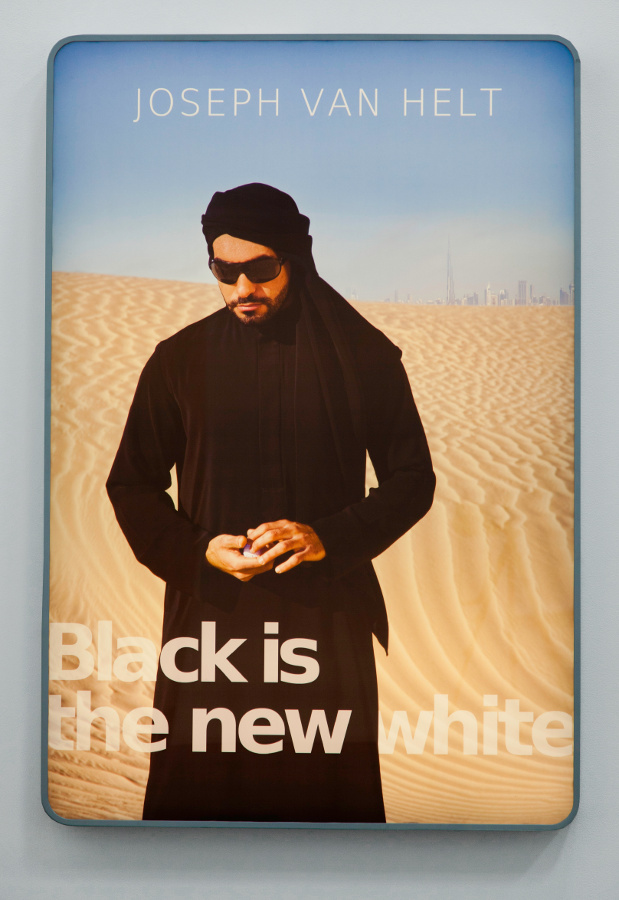 |
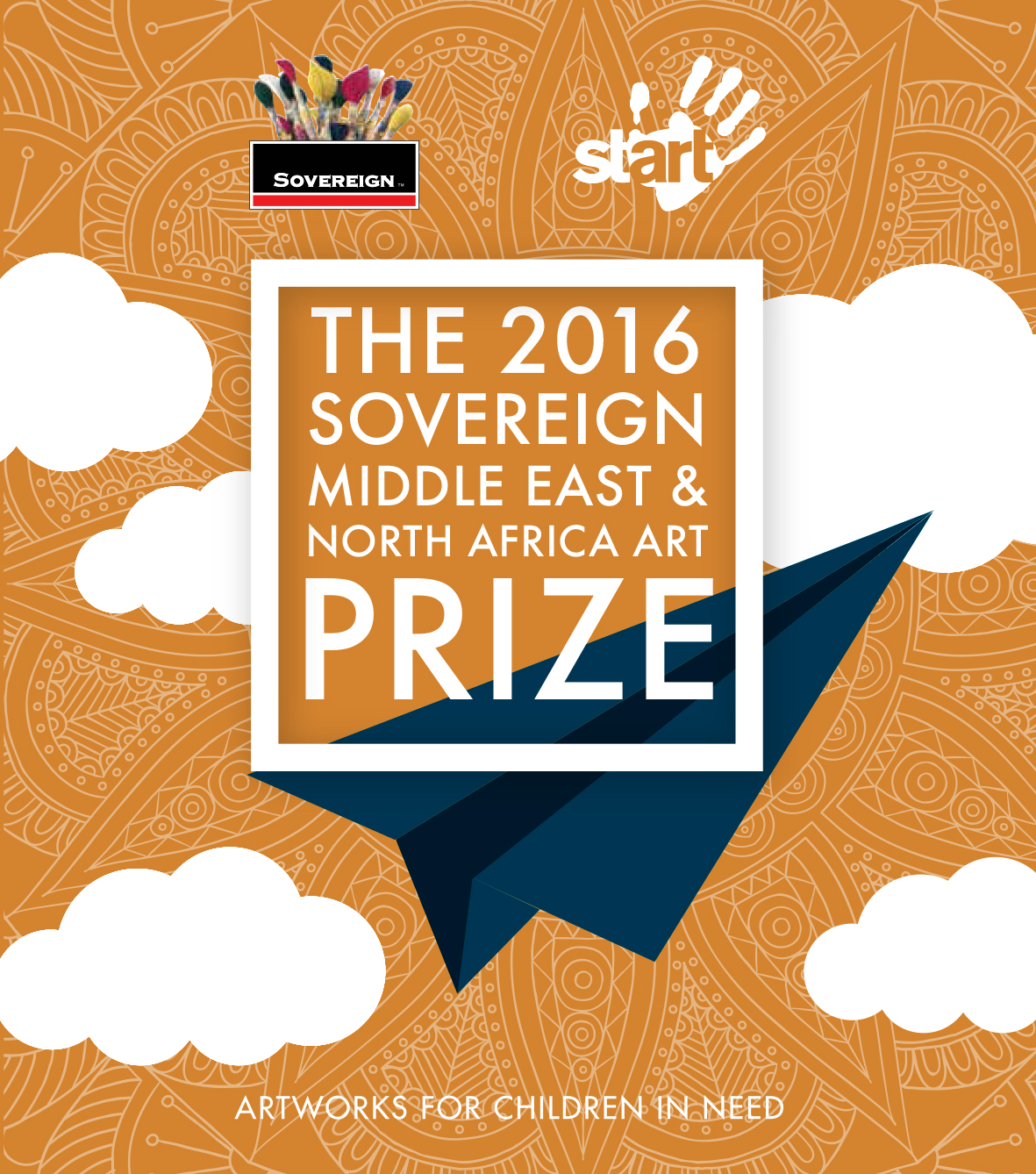
About The Sovereign Art Foundation (SAF)
The Sovereign Art Foundation is a charity founded in 2003 in Hong Kong, which is now also registered in the UK, Singapore and South Africa. SAF runs the annual Sovereign Asian Art Prize with the purpose of raising money to help disadvantaged children. Since its inception, SAF has raised over US$5 million for charities and artists worldwide, while the Sovereign Asian Art Prize has become the largest award for the arts across Asia.
SAF funds projects using art as education, rehabilitation and therapy for disadvantaged children. The Sovereign Asian Art Prize is now in its 12th year and is the biggest, best known and most prestigious arts prize in the Asia region. In 2016, SAF launched its inaugural MENA Art Prize, for the Middle East & North Africa region.
More info on www.sovereignartfoundation.com
 |
 |
INSTALLATION VIEWS
Photo Credit: Leslie Ranzoni
SYMPOSIUM
Photo Credit: Leslie Ranzoni
With thanks for the generous support in realizing this exhibition:



 Back to Homepage
Back to Homepage